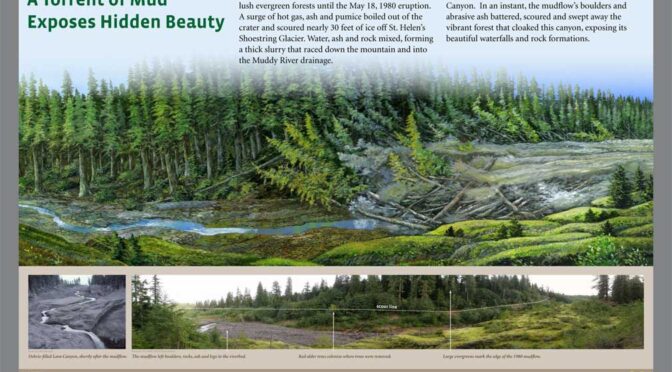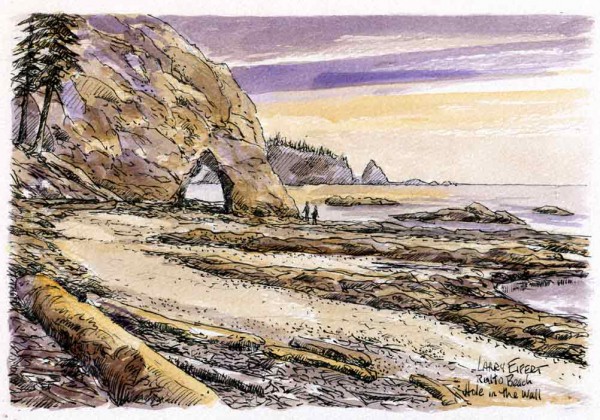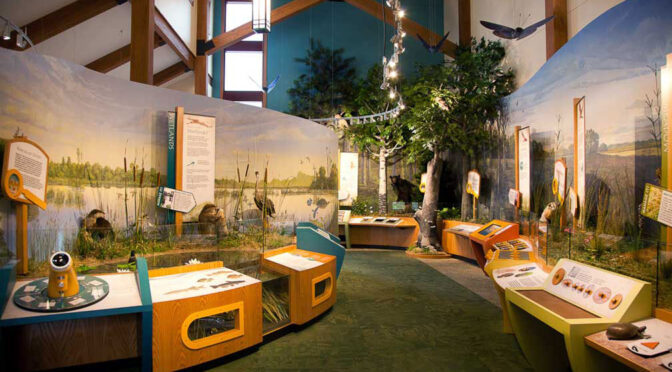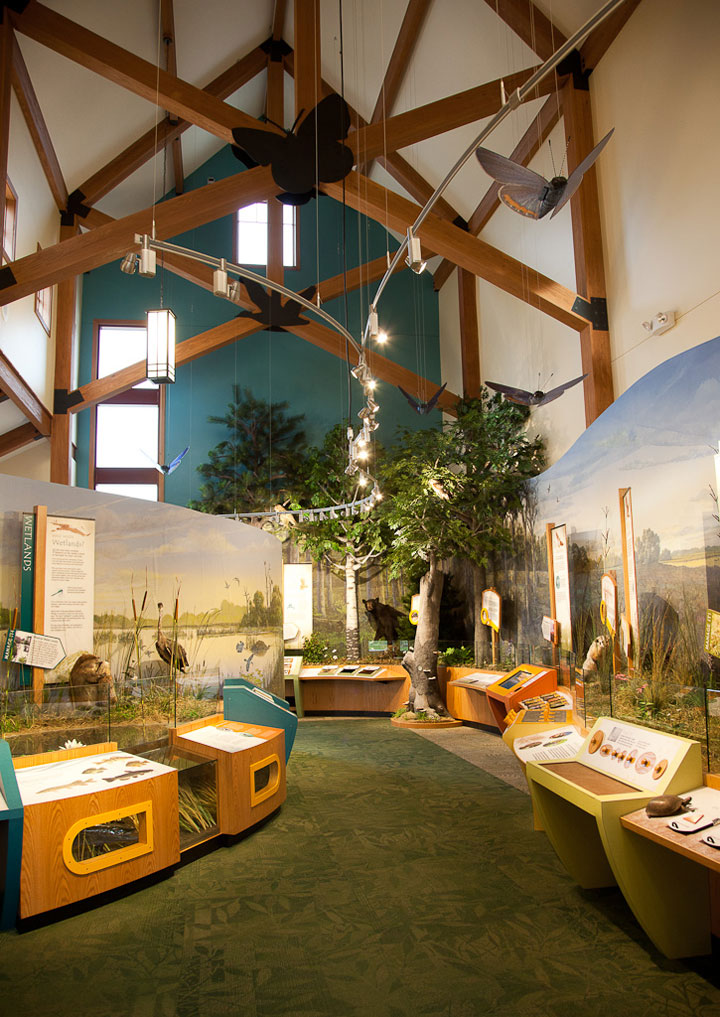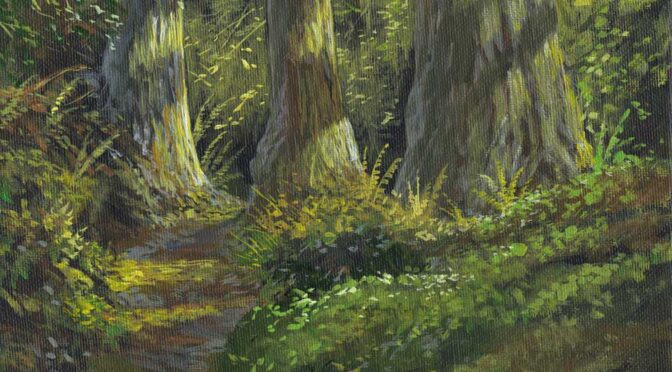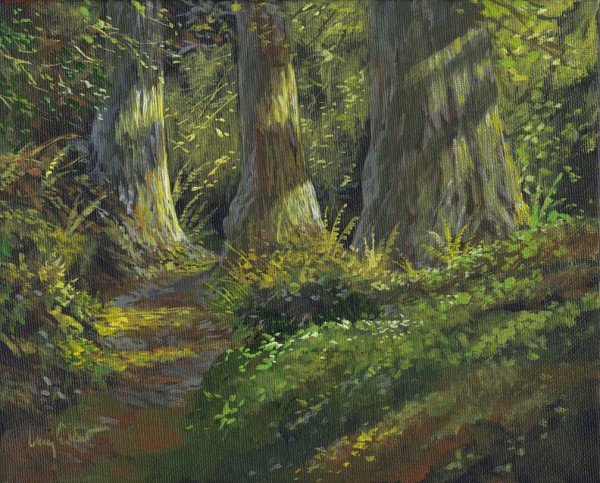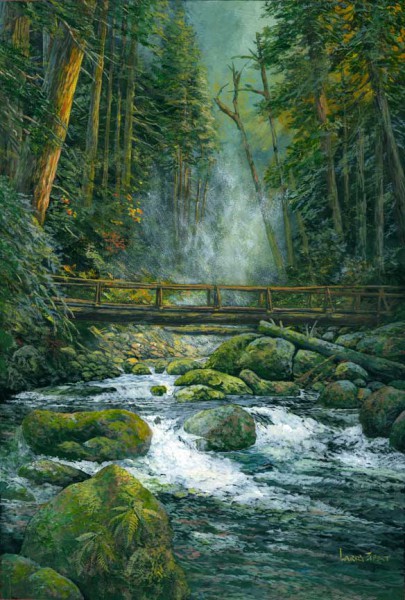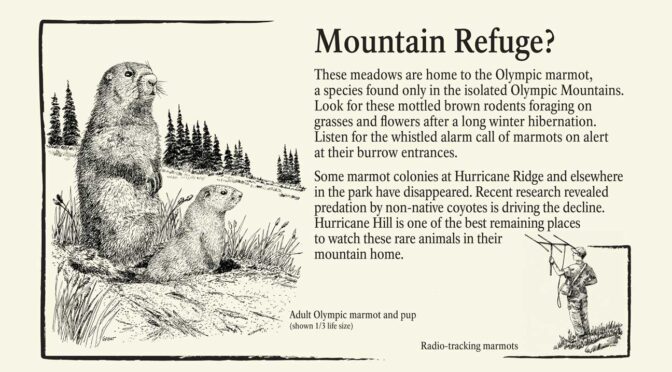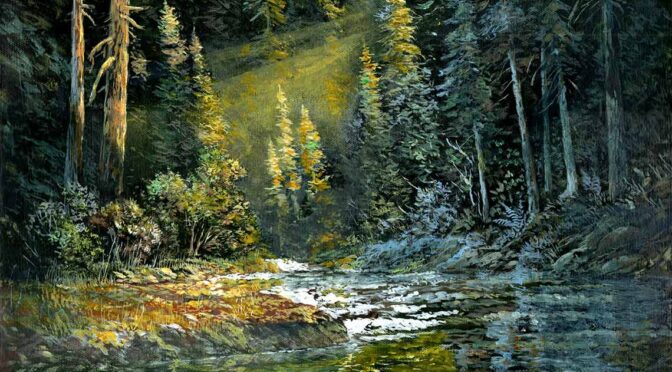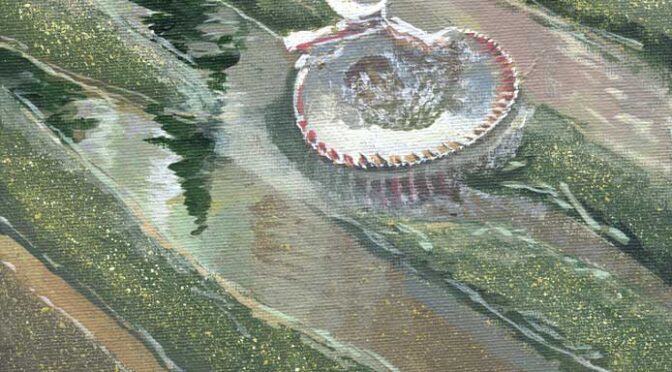This is another in the series of wayside panels I recently finished for Mount St. Helens National Monument. Now, you’ll have to admit I’m not normally posting paintings of mudflows – and I can’t even remember ever doing one. The top bit of art tells the story of the giant mudflow that filled this valley 31 years ago during the eruption. The finished outdoor panel will be placed at the overlook boardwalk above the creek. Linda Repplinger and Susan Jurasz of Sea Reach Ltd, 146 NE Yamhill St. Sheridan Oregon did the layout and design. Also involved in these panels were Peter Reedijk from Sea Reach and Charlie Crisafulli and several others from USDA Forest Service, Mount St Helens who added additional thoughts and comments on the accuracy of the images.
As it’s not easy to read here, this is the text for the panel written, I believe, by Rebecca Railey, Interpretive Planner at Mount St Helens National Monument: Lava Canyon’s beauty lay hidden for centuries beneath lush evergreen forests until the May 18, 1980 eruption. A surge of hot gas, ash and pumice boiled out of the crater and scoured nearly 30 feet of ice off St. Helens Shoestring Glacier. Water, ash and rock mixed, forming a thick slurry that raced down the mountain and into the Muddy River drainage. A 15 foot wall of mud and rock swept into Lava Canyon. In an instant, the mudflow’s boulders and abrasive ash battered, scoured and swept away the vibrant forest that cloaked this canyon, exposing its beautiful waterfalls and rock formations.
The photos below the painting show what it looks like today, but, as they say “a painting is worth 1000 words” and with only about space for a hundred of them – that’s why they commissioned me. In the process I learned a bunch about mudflows. This version had the mudflow too fluid, so I worked at making it more champagne-milk-shakey. Haven’t seen that final mock up, but only I and a couple of USFS science-guys would know the difference between milk-shakey and fluid-flowing. And since no one actually saw this happening, it’s only a guess anyway.
Thanks for reading this week.
Larry Eifert
Click here to go to the online blog this was to.
Click here to go to our main website – packed with jigsaw puzzles, prints, interpretive portfolios and lots of other stuff.
Click here to check out what Nancy’s currently working on with her photography.
